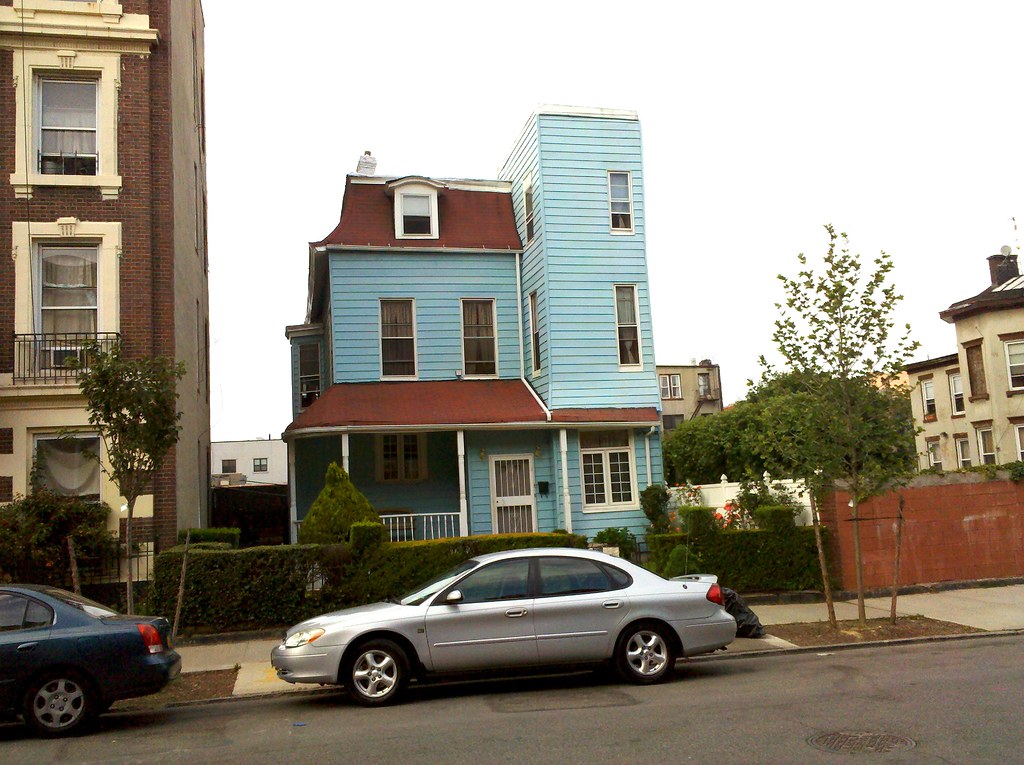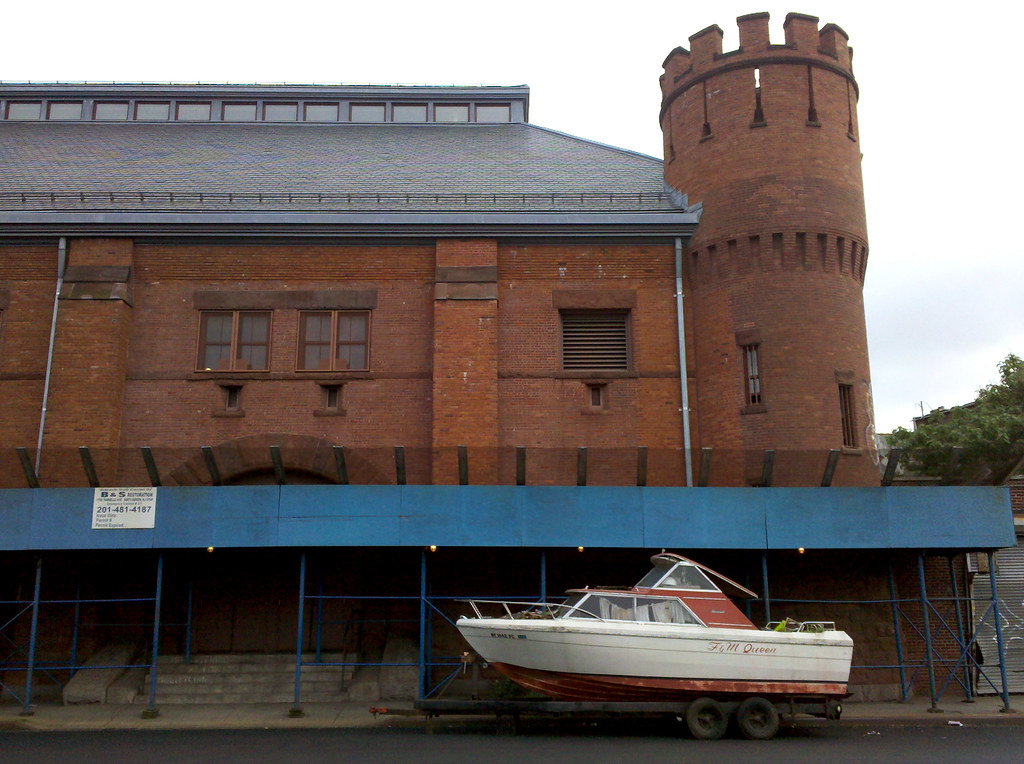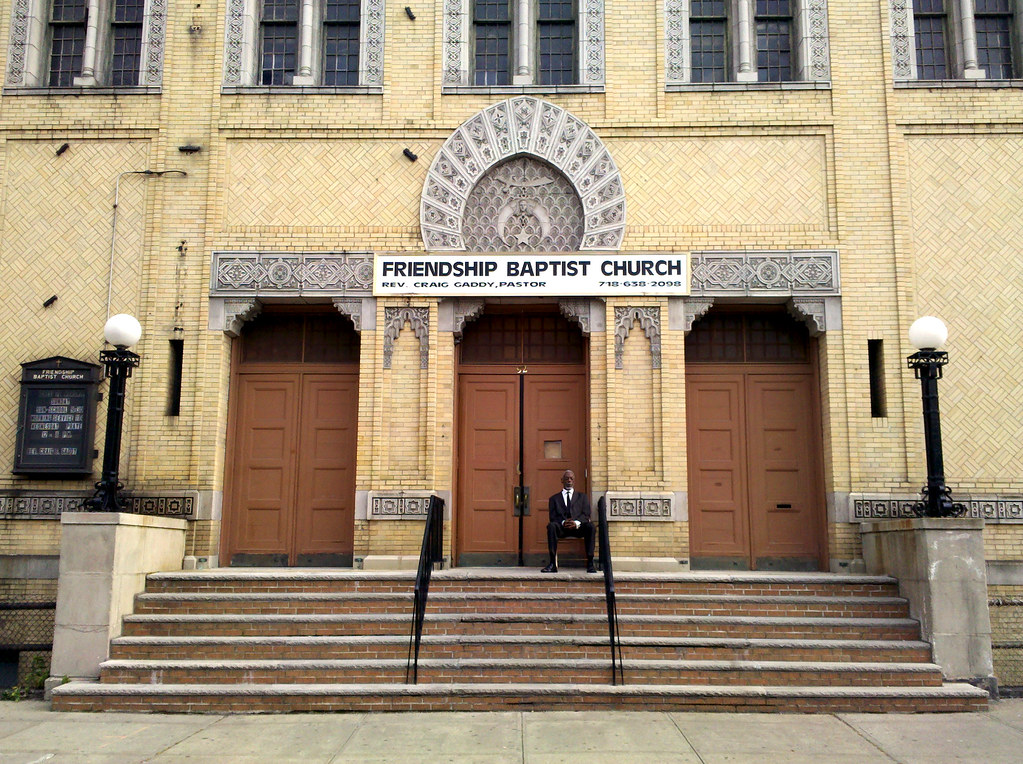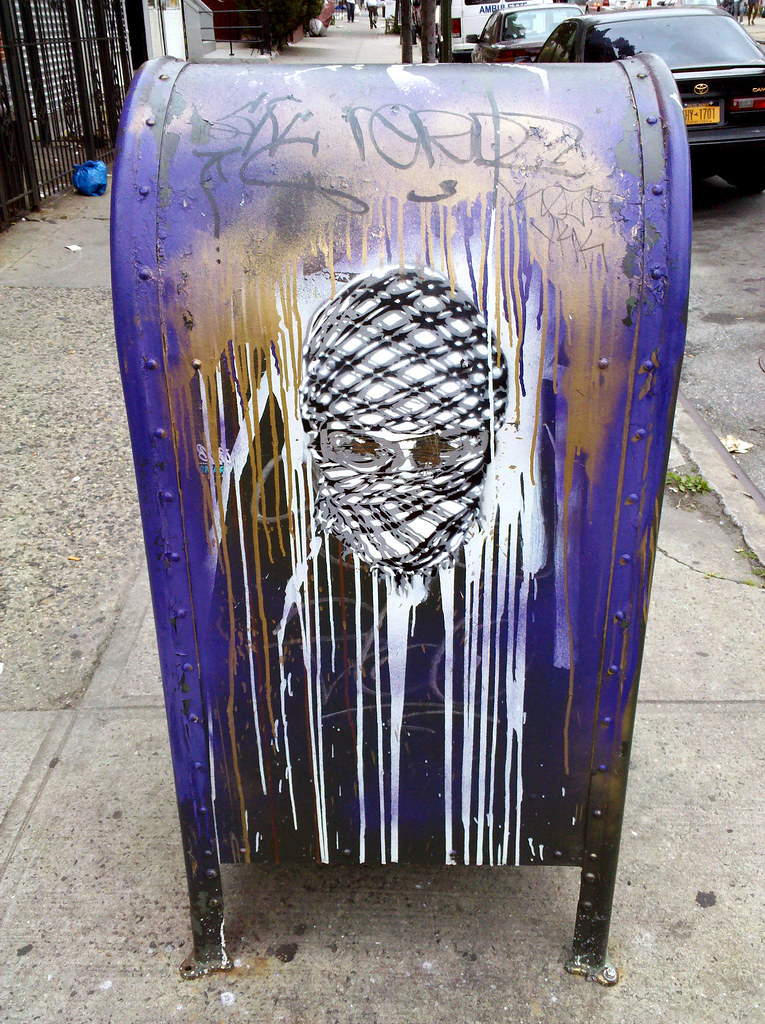
and its mesmerizing fountain

On view behind the Brooklyn Museum is an extraordinary collection of architectural sculptures and ornaments salvaged from buildings in the city that have been demolished. The figures in the foreground, for example, once embellished the town house of Hugh J. Chisholm, a pulp and paper baron. In the background, you can see Night, one of several remnants from the original Penn Station on display here.

This sculpture and its counterpart, Day, once flanked a large clock above an entrance to the original Penn Station, one of four such pairs adorning the structure (two of which have survived intact, including this one in Kansas City). Incredibly, there was no formal attempt to salvage the artwork from Penn Station; what remains today can largely be attributed to a scattershot assortment of individuals and institutions rescuing whatever they could from the demolition site and the landfill. Two granite balusters, for instance, owe their continued aboveground existence to a New Jersey man who found them in the Meadowlands, where the station's stonework had been dumped, hauled them out, and drove them home in his sagging station wagon.

When I first caught a glimpse of this chubby version of the Statue of Liberty, I assumed it was a contemporary piece commenting on American obesity. But it turns out it was created over 100 years ago as an earnest replica, and spent the majority of its life sitting atop the Liberty Warehouse on the Upper West Side of Manhattan. It's now part of the Brooklyn Museum's Memorial Sculpture Garden, having been donated in honor of the heroes of 9/11.

During Bobby Kennedy's 1966 visit to the troubled Brooklyn neighborhood of Bedford-Stuyvesant, residents challenged the senator to do something more substantial for them than simply show his face and make a couple of speeches. In response, he joined with Jacob Javitz, New York's senior senator at the time, in amending the Economic Opportunity Act to lay the legislative groundwork for community development corporations.
Kennedy returned to Bed-Stuy later in the year to announce the creation of the Bedford Stuyvesant Restoration Corporation, a community organization focused on housing, education, economic development, and the arts. Restoration took over an abandoned milk-bottling factory as its headquarters, and has since converted the entire block into a plaza surrounded by cultural centers, classrooms, and businesses.
While that all sounds very nice, I must admit that I was rather dismayed to find, prominently featured here in the plaza — and adorned with the oversized heads of the politicians and local leaders who made this place possible, no less — the bland antithesis of spirited community development: my arch-nemesis, Applebee's!

Remembering one of the ugliest episodes in New York's recent history
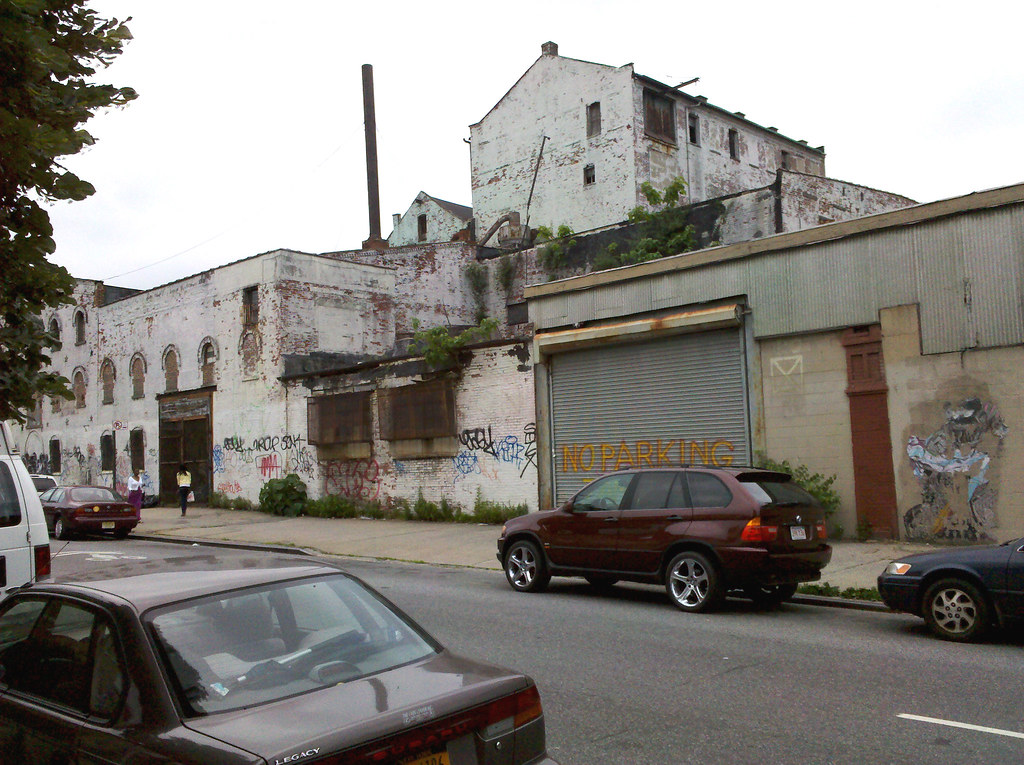
This now-largely-vacant complex began its life as the Bedford Brewery.








